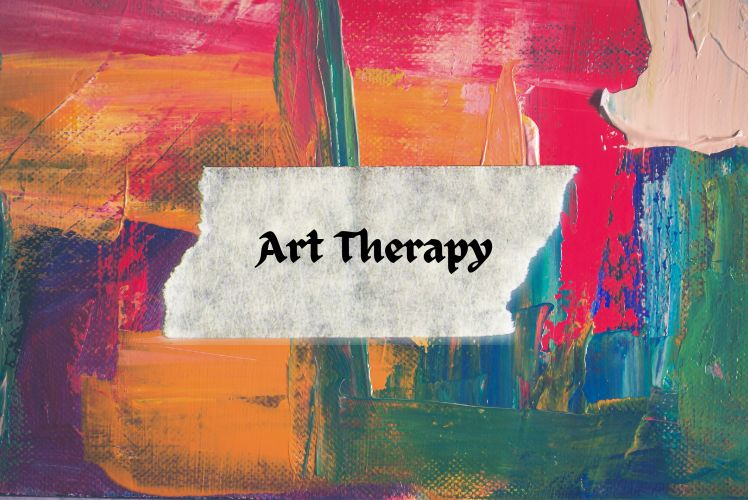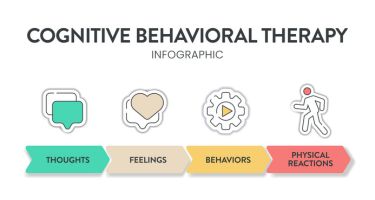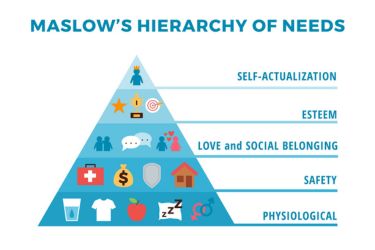Absolutely! Who hasn't felt the weight of worry weighing down, or stared blankly at a canvas, paper, or screen, unsure where to begin? Isn't it like striking a mental roadblock? But what if I told you there's a method to break past that barrier, to release the stress pressure valve, and to reignite your creative spark? Enter the world of art therapy, a place where self-expression meets healing, where colours and shapes become the language of your spirit, and where that intimidating blank space transforms into a canvas for possibility. Let's look at how art therapy may transform situations of overwhelm and stagnation into opportunities for self-discovery and progress.
Art therapy is more than just painting on canvas or moulding clay into shapes; it is a profound journey of self-discovery and healing. Consider this: you're in a safe, supportive setting, equipped with brushes, colours, and a blank canvas. There are no rules or judgements here; just you and your creative urges. Art therapy taps into the fundamental human drive for expression, offering a channel for emotions that are too complex or painful to articulate. It's a place where words fail and colours, shapes, and textures speak volumes.
Consider art therapy to be a link between the conscious and subconscious minds, allowing you to access buried emotions and untapped potential. Individuals can externalise their internal struggles, traumas, and victories by creating, giving form to the intangible and making sense of the turmoil within. It's a cathartic procedure that promotes introspection, reflection, and, ultimately, healing.
Whether you're dealing with anxiety, sadness, trauma, or simply looking for a way to express yourself, art therapy provides a unique combination of creativity and psychology. It's not about creating a masterpiece fit for a gallery; it's about the journey—the act of creation itself. And therein is the transformational potential of art therapy, in which each stroke of the brush and dab of colour represents a step towards wholeness and healing.
Let me share a powerful statistic that genuinely demonstrates the impact of art therapy: According to a study published in the American Journal of Public Health, participating in creative activities, such as art therapy, can lower cortisol—the stress hormone—in the body. This suggests that art therapy not only provides temporary emotional relief, but it also has tangible physiological advantages that improve general well-being.
Now, I am going to share a personal tale that powerfully demonstrates the transformational potential of art therapy. Meet Sarah, a woman who had struggled with anxiety for years. She frequently felt overwhelmed by racing thoughts and physical symptoms such as chest tightness and shortness of breath. Traditional talk therapy was beneficial to some level, but she struggled to adequately communicate the intensity of her emotions through words alone.
Then Sarah discovered art therapy. With the help of a good therapist, she began to explore her emotions via painting and collage. She was initially apprehensive, doubtful of her artistic ability, and terrified to face her inner demons. But as she let go of perfectionism and accepted the process, something wonderful happened. Sarah used her artwork to externalise her anxiousness, giving it shape and form on the canvas. She created swirling patterns of chaos and layers of brilliant colours to reflect the instability within. With each brushstroke, she felt a weight lift off her shoulders, as if she was releasing pent-up strain.
Sarah gradually noticed a significant improvement in her mental and emotional well-being. She grew more aware of her emotions, better able to identify triggers, and empowered to deal with stress in healthier ways. When words failed, art therapy provided her with a voice and a path to recovery that cut across language barriers. Sarah's story is just one of many people who have found art therapy to be life-changing. Whether you're dealing with mental health issues or simply looking for a creative outlet, art therapy has the potential to impact lives in profound and significant ways.
What is art therapy?
Art therapy is a type of expressive therapy that uses the creative process of making art to improve mental, emotional, and physical health. A skilled art therapist guides individuals through various artistic mediums such as painting, sketching, sculpture, or collage, allowing them to examine their thoughts, feelings, and experiences in a safe and supportive atmosphere. The emphasis is not on creative ability or the finished product, but on the process of production and the insights gained along the way. Art therapy can benefit people of all ages and backgrounds by allowing them to acquire insight, cope with stress, control emotions, and promote personal growth and healing.
How art therapy differs from traditional art creating?
Art therapy differs from traditional artmaking in that it focuses on therapeutic benefits rather than creating visually attractive artwork. Traditional art-making involves individuals engaging in artistic activities for self-expression, enjoyment, or creative inquiry without the structured guidance of a therapist. They can produce art on their own or in groups, with an emphasis on the finished product.
In contrast, art therapy combines the creative process with psychological principles to promote emotional expression, self-awareness, and healing. Clients work with a skilled art therapist to examine their thoughts, emotions, and experiences in a safe and supportive atmosphere, using a variety of artistic media. The therapist helps clients understand their artwork, recognise patterns, and gain insight into their inner world.
Furthermore, art therapy focuses on the therapeutic relationship between the client and the therapist, encouraging trust, empathy, and collaboration throughout the creative process. Clients are invited to reflect on their artwork, discuss their emotions and associations, and examine underlying difficulties in a nonverbal way. The artwork is a visible portrayal of the client's internal world, offering a physical avenue for inquiry and self-reflection.
Overall, while both conventional art-making and art therapy entail creative expression, art therapy differs in that it is therapeutic in nature, has systematic instruction, and focuses on psychological healing and progress. It provides individuals with a unique opportunity for self-expression, understanding, and personal transformation within a therapeutic setting.
How a skilled art therapist can guide the process?
Trained art therapists play an important role in leading the art therapy process, acting as facilitators, interpreters, and supporters for people who want to heal and discover themselves through artistic expression. First and foremost, art therapists foster a secure and supportive environment in which clients feel free to express their feelings, thoughts, and experiences through art. They foster therapeutic rapport, trust, and a nonjudgmental environment in which clients can freely express themselves.
Throughout the art therapy session, art therapists provide assistance and support to clients as they navigate the creative process and experiment with various artistic mediums and techniques. They may offer prompts, ideas, or directives to encourage creative expression and deeper investigation of emotions and themes.
Art therapists also interpret artwork, assisting clients in understanding the symbolism, metaphors, and underlying meanings buried in their creations. They urge clients to think about their artwork, make connections between it and their inner experiences, and acquire insights into their ideas, feelings, and behaviours.
Furthermore, art therapists incorporate psychological ideas and principles into the art therapy process, drawing on techniques such as psychoanalysis, cognitive-behavioral therapy, and mindfulness-based approaches. They personalise interventions to each client's specific needs and goals, modifying their therapeutic approach based on variables such as age, cultural background, and presenting concerns. In addition to guiding the artistic process, art therapists offer emotional support and validation to clients, as well as sensitivity and understanding. They assist clients in processing unpleasant emotions, dealing with obstacles, and developing coping mechanisms to manage pressures in their lives.
Overall, trained art therapists play a variety of roles in art therapy, including leading clients through the creative process, encouraging self-expression and discovery, analysing artwork, and offering emotional support within a therapeutic context. Their expertise and training help to make art therapy a more effective instrument for healing, growth, and transformation.
To summarise, art therapy serves as a light of hope and healing for those navigating the intricacies of mental health issues and striving to improve their general well-being. Throughout this journey, we've seen art therapy's transforming power as a tool for self-expression, emotional release, and personal growth.
Art therapy, which uses the creative process, provides a unique opportunity for people to examine their innermost thoughts, feelings, and experiences in a safe and supportive atmosphere. Clients can use painting, sketching, sculpture, or collage to externalise their feelings, acquire insights into their challenges, and find peace in the act of creating. Furthermore, art therapy has significant benefits for mental health, alleviating symptoms of anxiety, despair, trauma, and stress. According to research, engaging in artistic activities can lower cortisol levels, improve mood, and promote relaxation, all of which contribute to a higher sense of well-being and resilience.
Aside from its therapeutic benefits, art therapy promotes personal empowerment, self-discovery, and empowerment. It helps people to embrace their creativity, increase their self-awareness, and learn coping strategies for facing life's problems. As we reflect on the path of art therapy, remember that healing is a never-ending process of self-discovery and growth. Whether you're dealing with mental health issues or just looking for a way to express yourself, art therapy may be a source of hope—a canvas for possibility and a path to recovery.
Allow art therapy to be the thread that connects the pieces of our lives, weaving a story of perseverance, strength, and transformation. Accept the colours of your emotions, the textures of your journey, and the beauty of your individual story. For in the world of art therapy, every brush stroke, dab of colour, and creation offers the potential for healing and rejuvenation.
Useful resources
Books:
”The Art Therapy Sourcebook" by Cathy Malchiodi: This comprehensive guide offers an overview of art therapy techniques, exercises, and applications for various populations.
”Art as Therapy" by Alain de Botton and John Armstrong: This book explores how art can be used as a tool for self-reflection, emotional expression, and personal growth.
Websites:
American Art Therapy Association (AATA): The AATA website provides information on art therapy, including educational resources, research articles, and directories for finding certified art therapists. (Website: arttherapy.org)
The British Association of Art Therapists (BAAT): BAAT offers resources and information on art therapy practice, training, and research. (Website: baat.org)
Online Courses and Workshops:
Coursera: Coursera offers online courses on art therapy-related topics, including introductory courses on the principles and practices of art therapy. (Website: coursera.org)
Udemy: Udemy features a variety of courses on art therapy, ranging from beginner-level introductions to more specialized topics such as trauma-informed art therapy. (Website: udemy.com)
Journals and Publications:
Art Therapy: Journal of the American Art Therapy Association: This peer-reviewed journal publishes research articles, case studies, and theoretical discussions on art therapy practice and theory. (Website: tandfonline.com)
The Arts in Psychotherapy: This interdisciplinary journal explores the intersection of art, creativity, and psychotherapy, including articles on art therapy approaches and outcomes. (Website: sciencedirect.com)
Social Media and Online Communities:
Art Therapy Alliance: This online community connects art therapists and enthusiasts worldwide, providing opportunities for networking, collaboration, and professional development. (Website: arttherapyalliance.org)
Art Therapy Resources: Various social media platforms, such as Instagram and Facebook, host communities and pages dedicated to sharing art therapy resources, inspiration, and insights.
These resources offer a wealth of information and opportunities for exploring the theory, practice, and applications of art therapy. Whether you're a student, practitioner, or curious individual seeking to learn more, these resources can serve as valuable guides on your journey into the world of art therapy.





















